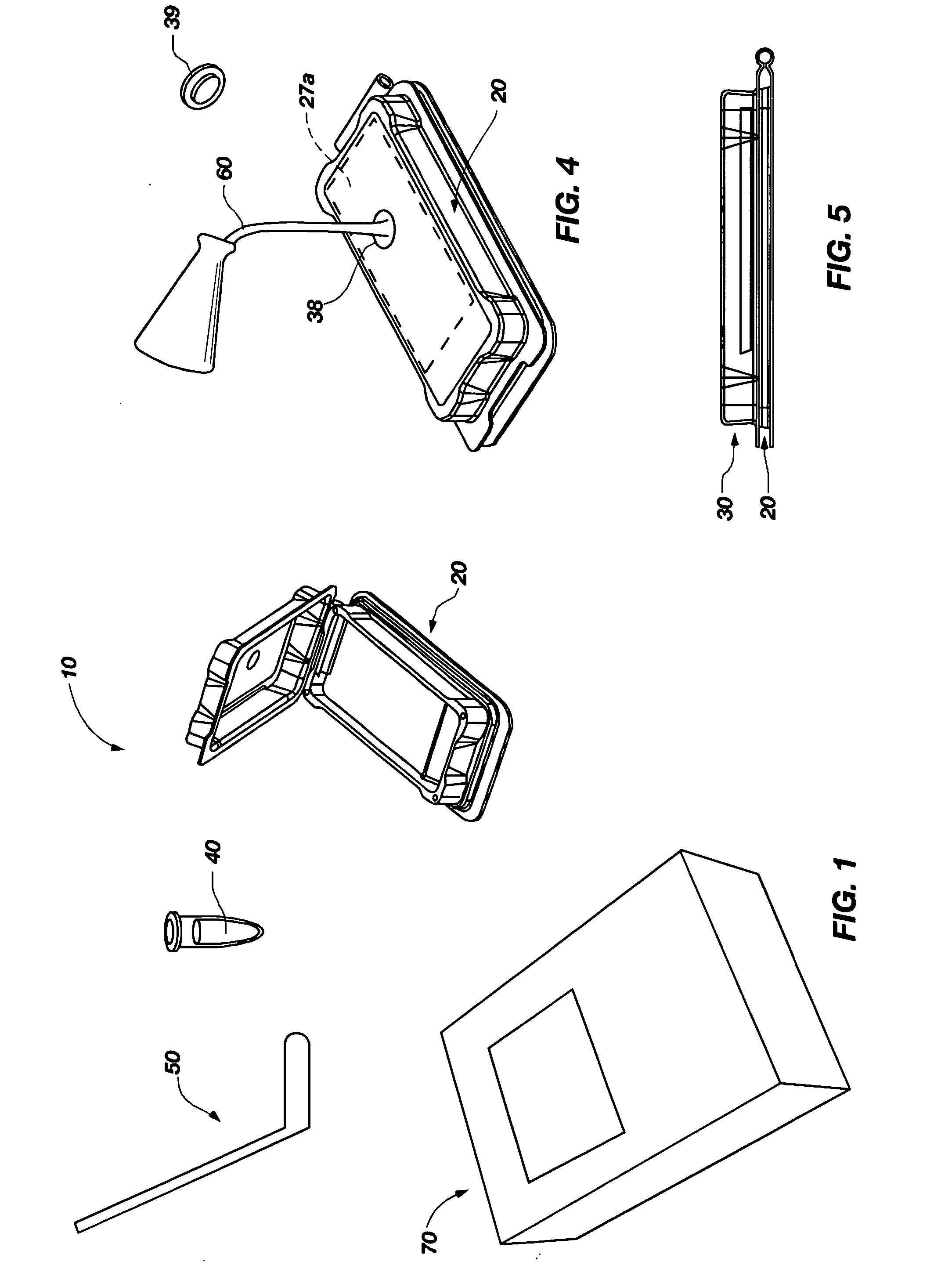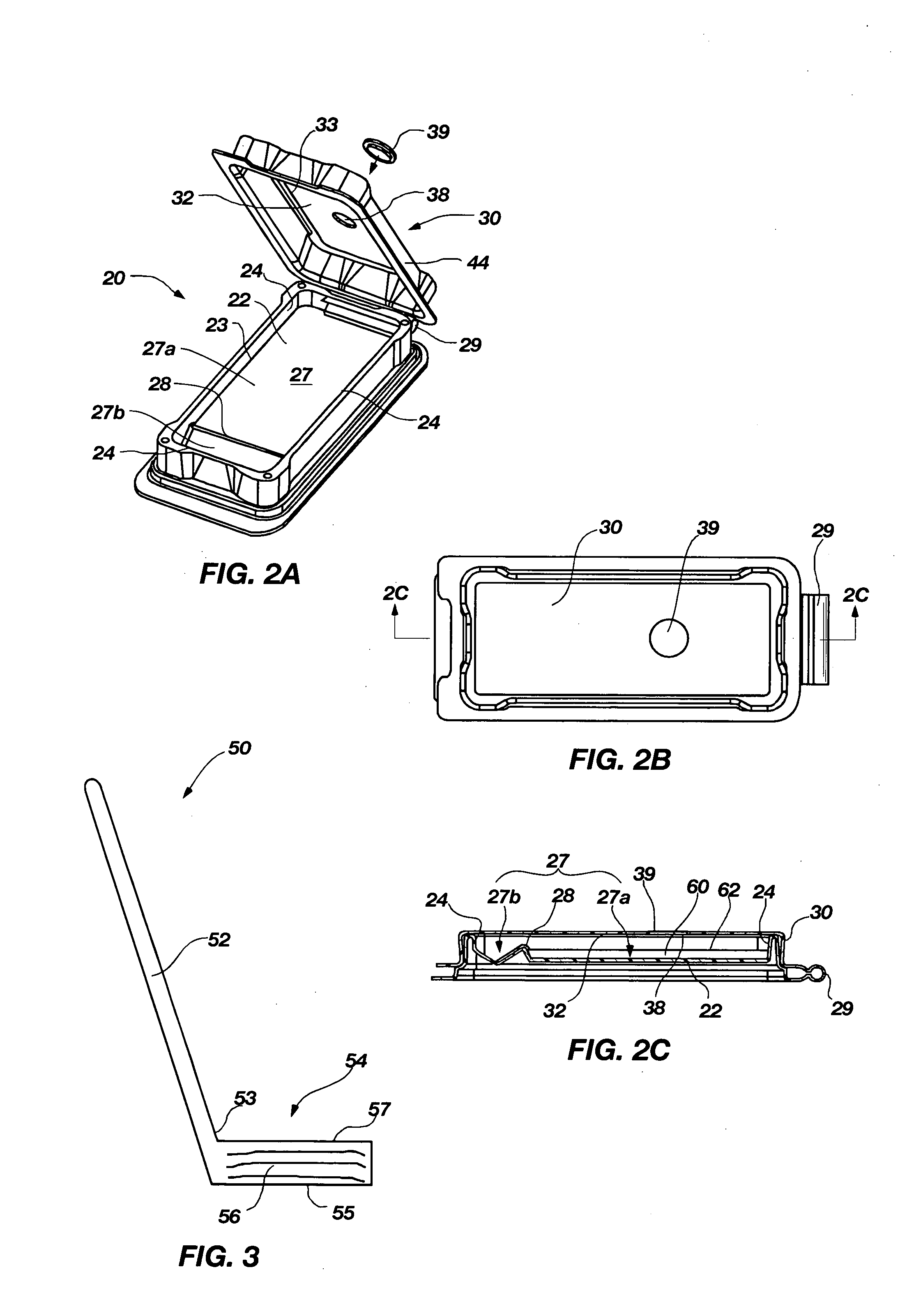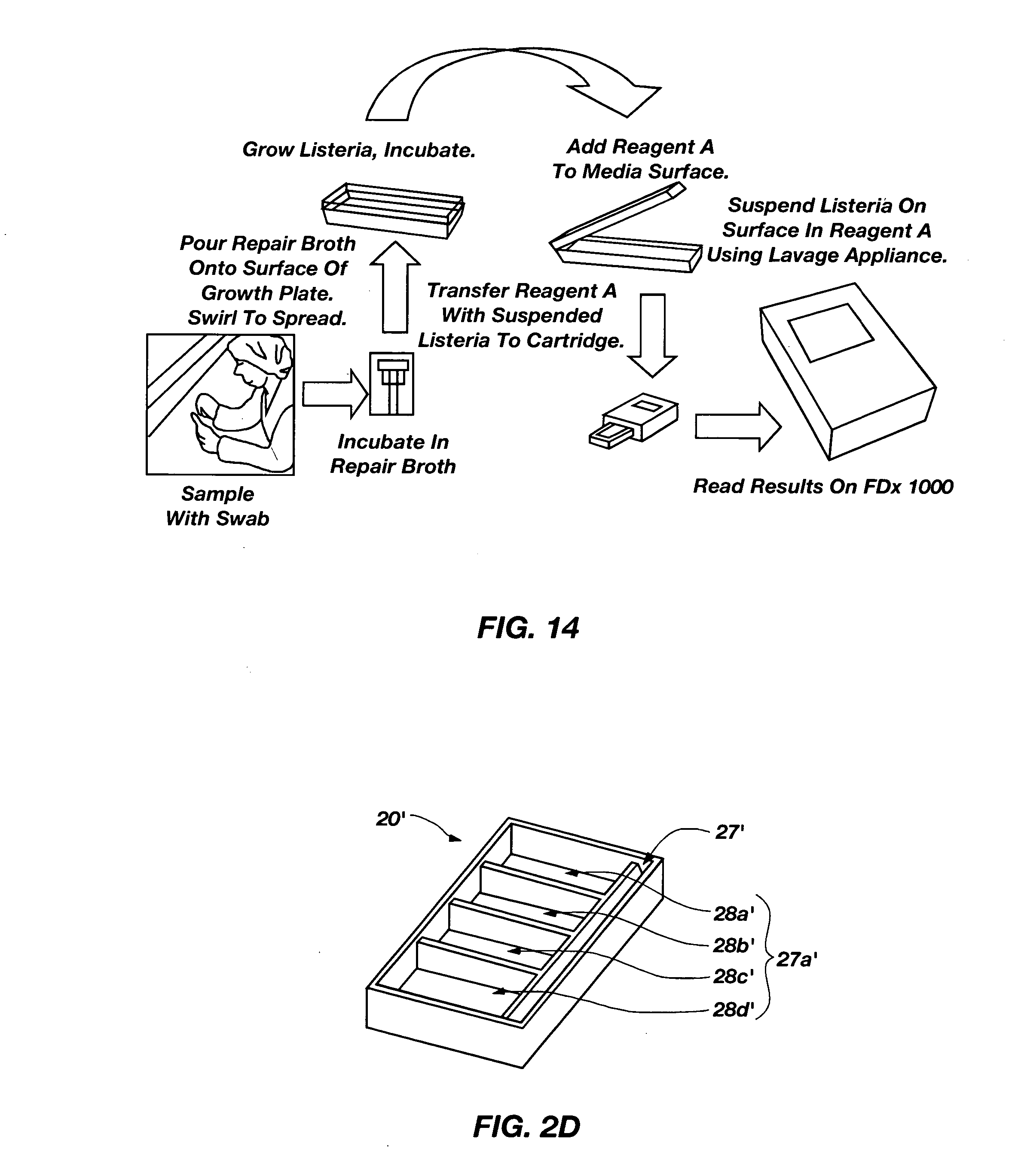Apparatus, methods and systems for rapid microbial testing
a technology of microbial testing and apparatus, applied in the field of microbial testing techniques, can solve the problems of contaminated surfaces, death, sickness, etc., and achieve the effects of reducing the risk of infection
- Summary
- Abstract
- Description
- Claims
- Application Information
AI Technical Summary
Benefits of technology
Problems solved by technology
Method used
Image
Examples
example 1
Preparation of Immunoassays for Enviromental Listeria Testing
[0067] Affinity-purified goat antibody to Listeria obtained from Fitzgerald Industries International of Concord, Mass., was labeled with a 15-fold molar excess of Alexa-Fluor 647-succinimidyl ester from Molecular Probes, Inc., of Eugene, Oreg., in 100 mM sodium borate, pH 8.3, and 150 mM NaCl. The fluorescent conjugate was separated from the free dye by gel filtration through a column of 100 mL of Sephadex G-50 beads in a buffer including 50 mM Bis Tris Propane, pH 7.0, 150 mM NaCl, and 0.05% sodium azide. After spectral characterization, the conjugate was diluted to 7.2 mcg IgG / mL in a buffer including 150 mM Tris-HCl, pH 8.0, 54 mg bovine serum albumin (“BSA”) / mL, 18% sucrose, 300 mM NaCl, 0.1% Tween-20 and 5 mg of goat gamma globulin / mL. This conjugate solution was in turn diluted 1:2 with phosphate buffered saline, pH7.4, containing 0.05% Tween 20 (“PBST”). This final solution is referred to as “Reagent A.”
[0068] Affi...
example 2
Sample Collection and Preparation
[0073]Listeria sampling included placing a swab or small sponge previously wetted with the appropriate transitional liquid into contact with a defined area of a tested surface. The swab or sponge was then placed in a transitional liquid for a short period of time (e.g., about one hour to about four hours) at a defined temperature (e.g., room temperature). An aliquot of the liquid broth was then spread onto the surface of the appropriate semisolid growth media and microorganisms were allowed to proliferate at a defined temperature (e.g., 37° C.). After incubation for a defined duration (e.g., about 12 hours to about 18 hours), the cells were harvested and assayed.
example 3
L. monocytogenes 4e Colonies Grown on Oxford and Brain Heart Infusion Agar
[0074]L. monocytogenes 4e present in the sample was grown on both Oxford and Brain Heart Infusion (BHI) agar plates for 17 hours at 37° C. Single colonies were sampled and dispersed into 0.3 mL of PBST and diluted 1 / 1 (“Neat”), 1 / 10, or 1 / 100, then mixed 2:1 with Reagent A and tested on the portable analyzer. In addition, a “Blank” was prepared by washing semisolid growth media to which samples had not been applied with the PBST, then adding the Reagent A to the PBST. The rates of binding between the L. monocytogenes 4e in each sample dilution and the antibodies on the waveguide are identified in TABLE 1.
TABLE 1Growth MediaSample DilutionRateBHIBlank−3Neat267510-fold903100-fold93OxfordBlank−1Neat256010-fold1994100-fold418
[0075] These data indicate that the immunoassay reaction is specific for Listeria, can be used to confirm the presence and identity of microorganisms selected from the surface of an agar pl...
PUM
| Property | Measurement | Unit |
|---|---|---|
| temperature | aaaaa | aaaaa |
| volume | aaaaa | aaaaa |
| incubation time | aaaaa | aaaaa |
Abstract
Description
Claims
Application Information
 Login to View More
Login to View More - R&D
- Intellectual Property
- Life Sciences
- Materials
- Tech Scout
- Unparalleled Data Quality
- Higher Quality Content
- 60% Fewer Hallucinations
Browse by: Latest US Patents, China's latest patents, Technical Efficacy Thesaurus, Application Domain, Technology Topic, Popular Technical Reports.
© 2025 PatSnap. All rights reserved.Legal|Privacy policy|Modern Slavery Act Transparency Statement|Sitemap|About US| Contact US: help@patsnap.com



